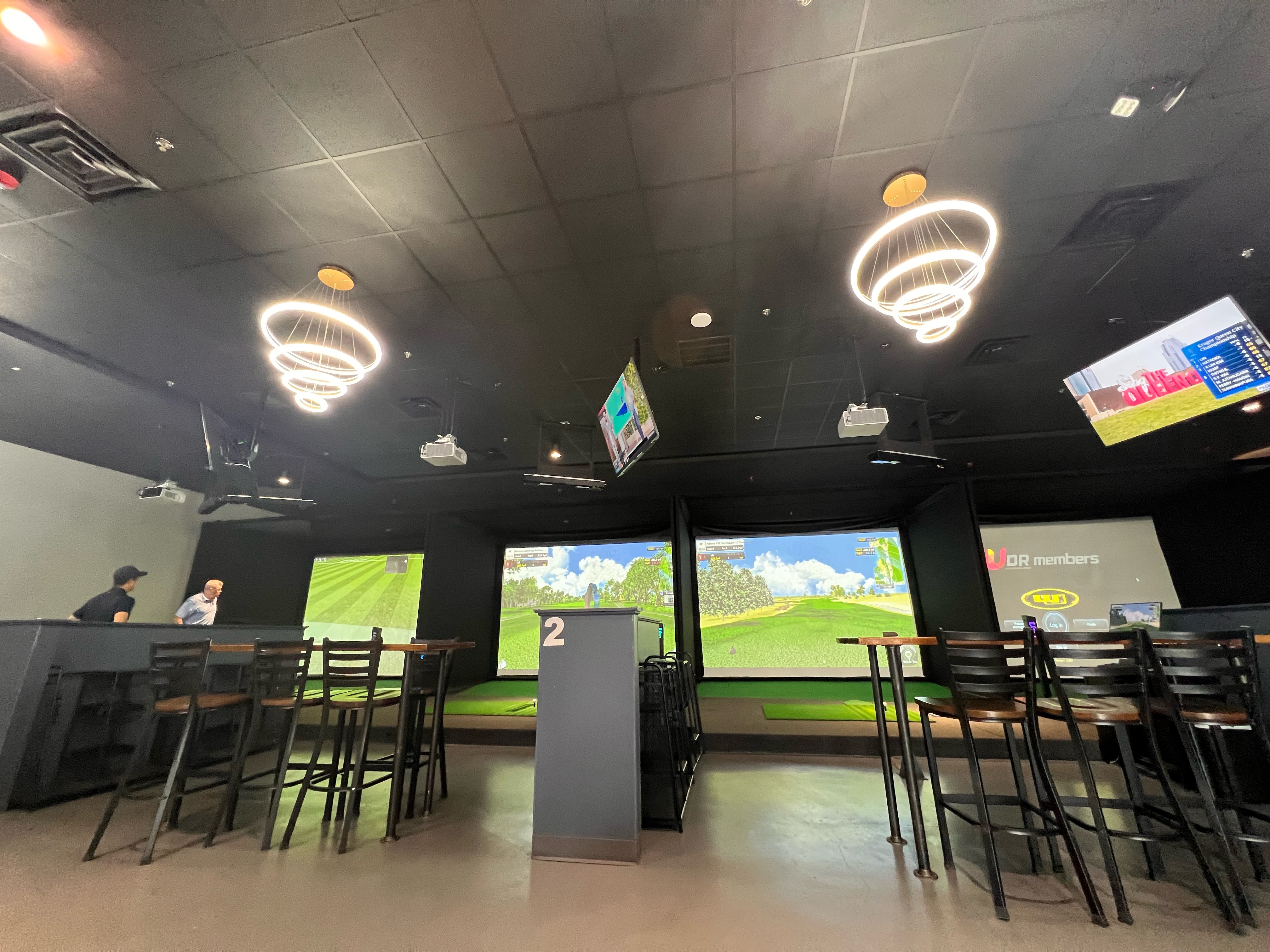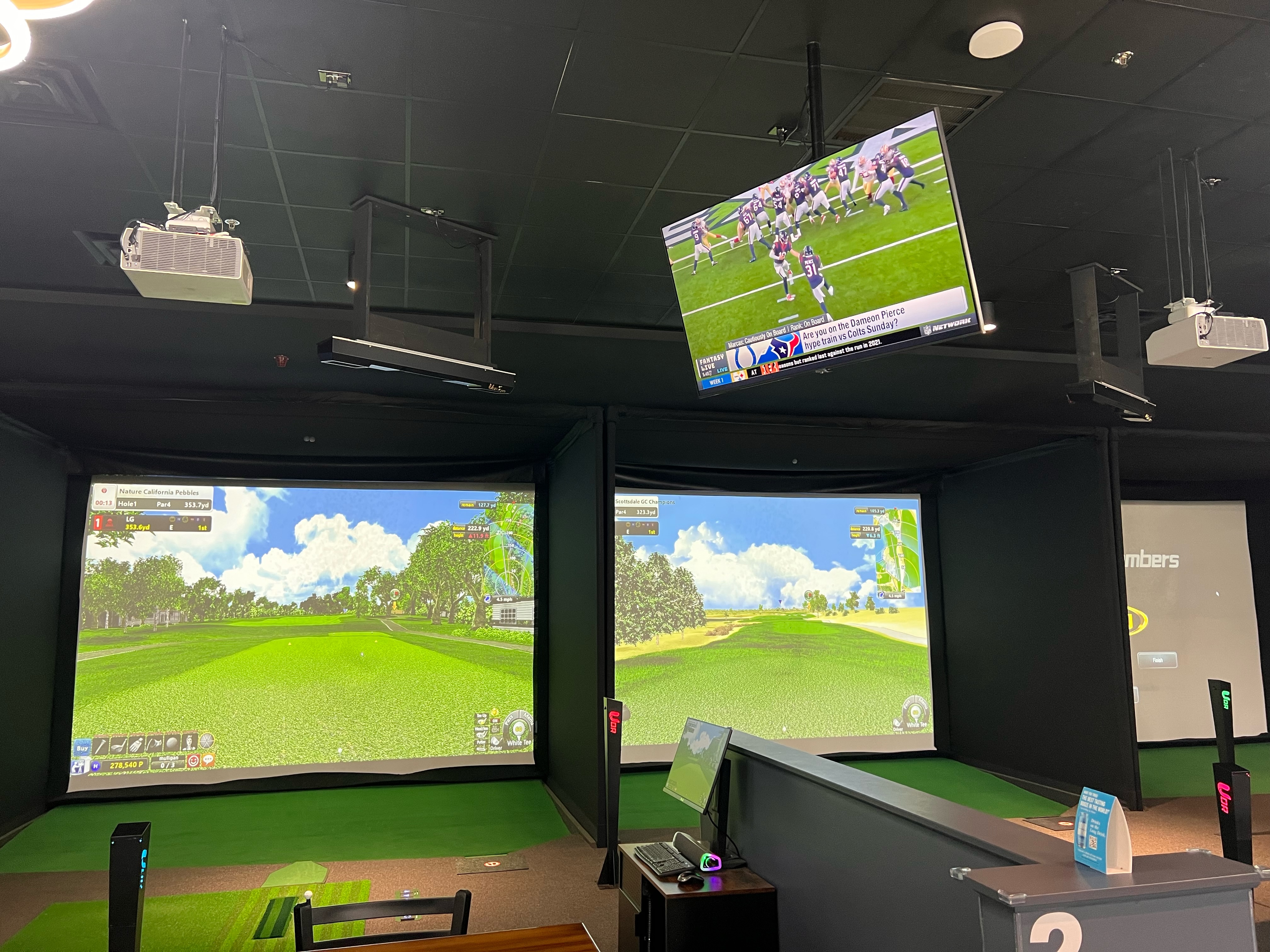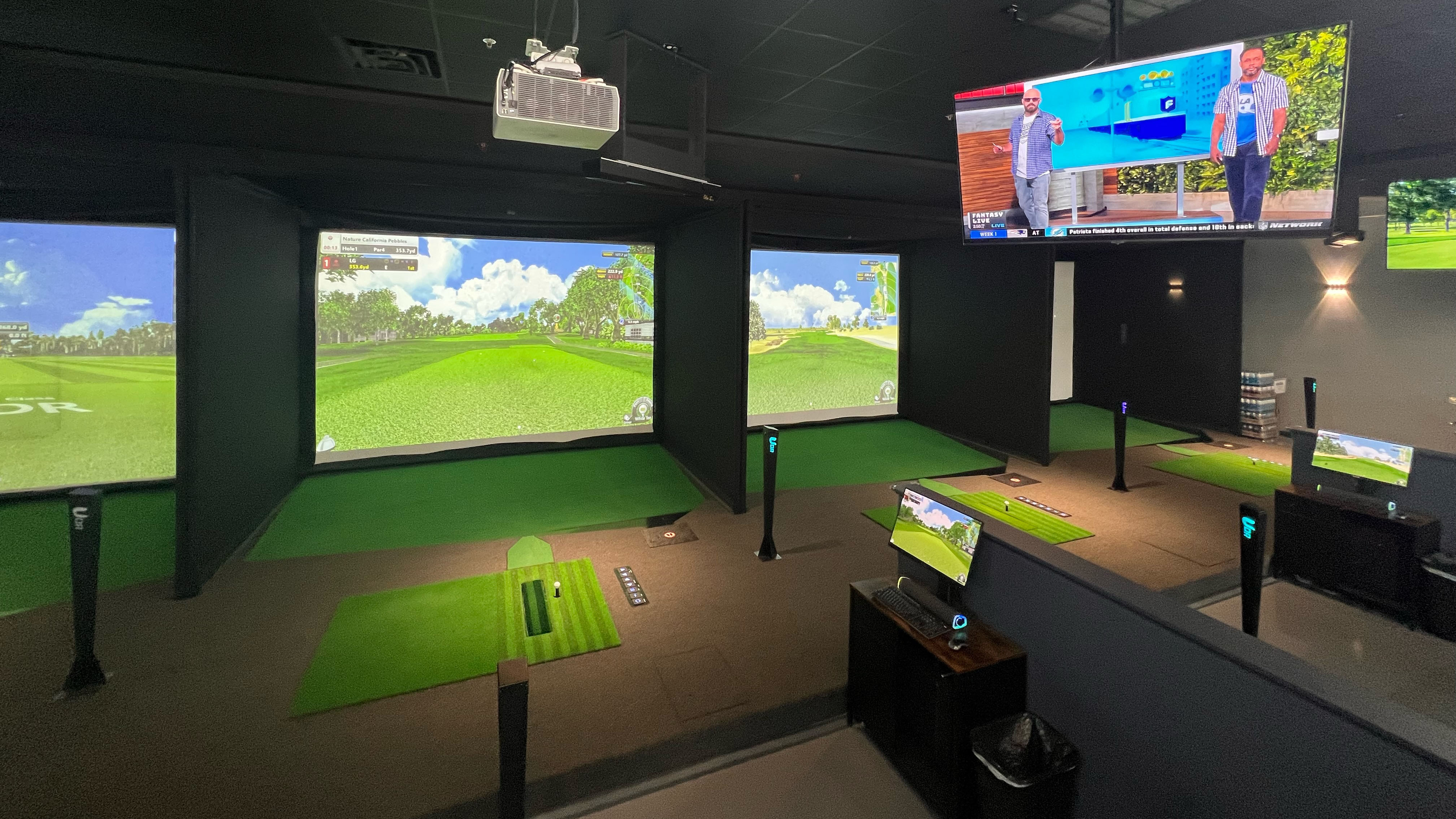In the Chicago suburb of Buffalo Grove, IL, an innovative company is hard at work disrupting the virtual golf industry with a custom-designed turnkey solution that combines sophisticated big data analytics and the latest short-throw laser projectors from LG Business Solutions, which include technology that gives players an experience so realistic that golf pros have begun using it to give lessons.
When owner Won Cho founded the company with business partner Jason Jung in 2019, their first act was to find the right simulator solution with excellent hardware and software, leading them to sign a deal with South Korea-based UDR Simulators to be the exclusive U.S. distributor. Once WJ Golf’s simulator was installed and put to use in the clubhouse at a local golf club, enabling the club to stay open all winter for year-round play, guests, and players marveled at the 16x10-foot projection screen. Cho, however, saw it differently.
[Here's How LG dvLED Displays Brings the Magic on Times Square Inside]
“The UDR Simulator is an excellent, capable system, but there are components that can be changed or determined by the owner, such as the projector,” Cho explained. “It was great to see the high level of immediate interest after we installed three units at the golf club, but after several months we realized the bulb-based projectors were beginning to dim and lose color accuracy. They all needed new bulbs. Hoping to reduce maintenance and provide a more consistent playing experience, we started researching the latest projection technologies of some of the top models from projector brands.”
The results led Cho to choose the ultra-bright short throw LG ProBeam projectors known for their excellent color, clarity, and lifespan. In addition to improved picture quality and reduced maintenance, using a short-throw model allowed WJ Golf to shift the location and angle of the projector, which eliminates the possibility of a player accidentally looking at the projection source when they turn around. The WJ Golf simulators also feature lower latency than competing U.S. solutions so that by the time a player lifts their head after swinging, the ball is already “in the air” on the screen so there doesn’t appear to be any lag from the player’s perspective.

“Another reason we chose to use the UDR Simulator as our base is their Lie Converter, a yard-long cylinder mounted into the floor that allows players and trainers to rotate through various ground types and experience the real feedback and friction of fairways, rough areas and even bunker surfaces,” Cho said. “We wanted to present the most realistic, professional-feeling simulation we can, and we achieved our goal through more immersive graphics and intuitive tactile play. It’s really about giving the player the impression that they are really in the moment, standing at the tee, not in a building. Together, the Lie Converter, the oversized screen and the crisp, bright projector make that possible.”
[9 Large-Venue Projectors and Key Features Experts Recommend as Live Events Return]
The quality of WJ Golf’s simulators has received a warm reception throughout Illinois, with the company now operating three commercial locations in addition to selling turnkey units to corporate buyers and homeowners. The company has a five-year plan to expand to 25 locations in Illinois, Wisconsin, Michigan, and Indiana, and has expressed interest in launching what would be the U.S.’s first golf simulator tournament or competition series, based on the ability to record sessions and link distant simulators to enable both staggered and head-to-head play.
With more than 170 real golf courses available on the simulator system, there is always something new and exciting for players to try. WJ Golf’s simulators also provide a unique putting capability that requires players to get within five feet of the flag before moving to the next hole. Many current simulator competitors avoid the putting green experience, and instead automatically add one or two strokes to a player’s score based on where they land on the green.
“Even our local PGA pro Todd Sones has begun recommending lessons on the simulator after he saw clients rapidly improve following initial simulator sessions,” Cho added. “The indoor golf simulator industry is exploding. Since we opened, we’ve seen four additional indoor golf facilities pop up around us. We are aggressively pursuing a number of opportunities to capture the growing market and deliver superior indoor golf experiences across a variety of use cases. Throughout this journey, we expect LG projectors to continue providing differentiation and elevated experiences for our players.”

One of the outsized benefits of golf simulators is they enable year-round play and business operations for both golf clubs and sports entertainment complexes, which is an opportunity Cho hopes to address in concert with facility operators across the region.
[AV Network's top stories, product news, and expert insights]
Addressing the growth of the golf simulator market, LG noted what it can offer for communities or individuals without the need to access to traditional golf courses and training.
“Virtual golf is poised to make the sport more accessible to more players, particularly younger generations that show enthusiasm for eSports. They can combine their technological proficiency with their athletic ability to realize competitive prowess at a lower investment level than standard golf play,” said Tom Carroll, sales director at LG Business Solutions USA. “Whether communities, institutions, schools or local businesses take the reins, we expect golf simulators to broaden the sport’s visibility and help maintain enthusiasm as the ranks swell with players who were previously excluded. Technology is key to WJ Golf’s growth and success, and we’re proud that LG’s advanced short-throw laser projectors are providing an enhanced experience.”
